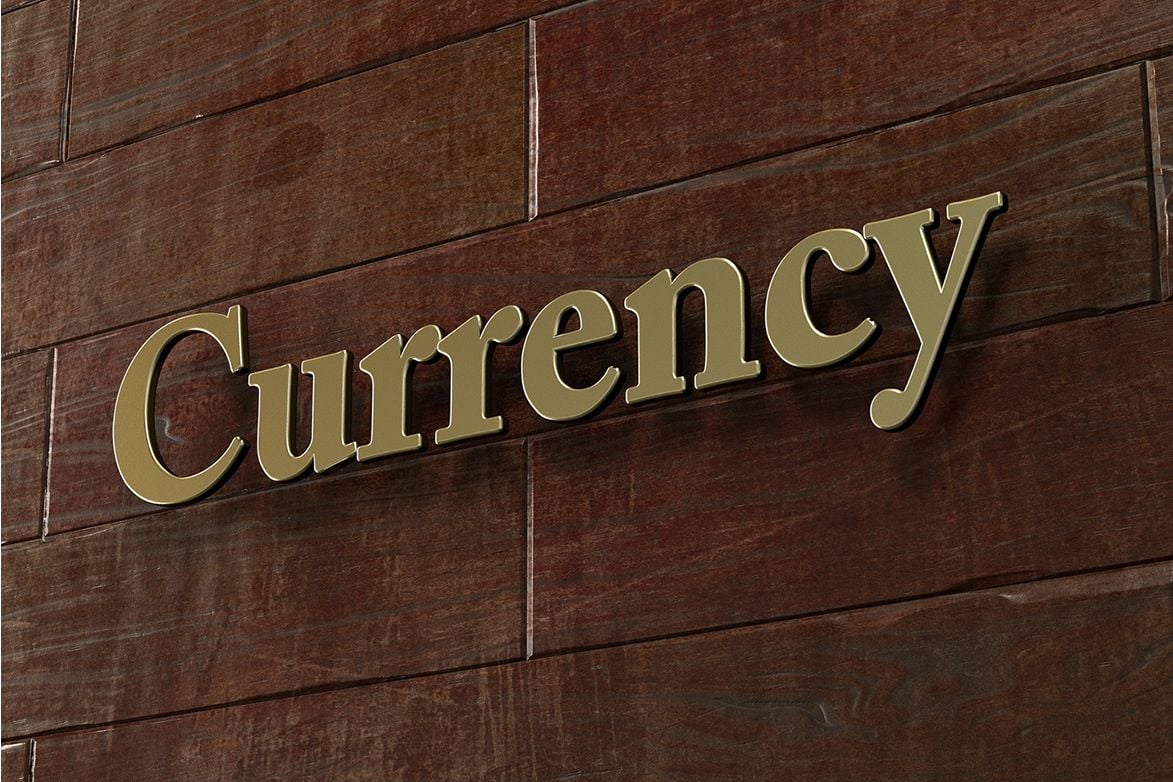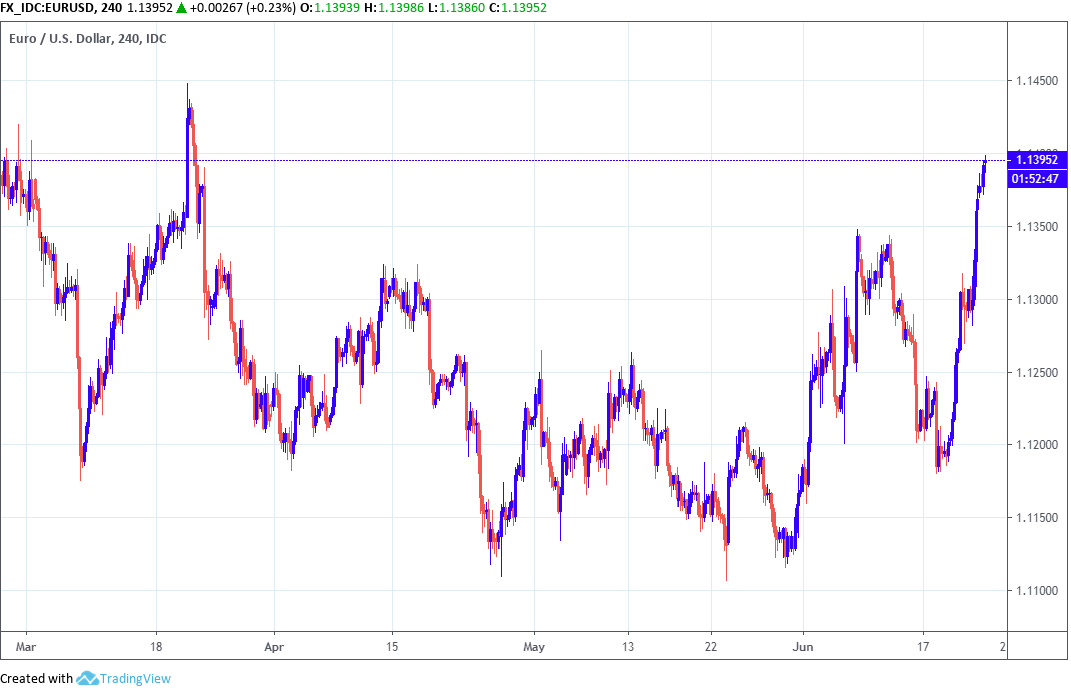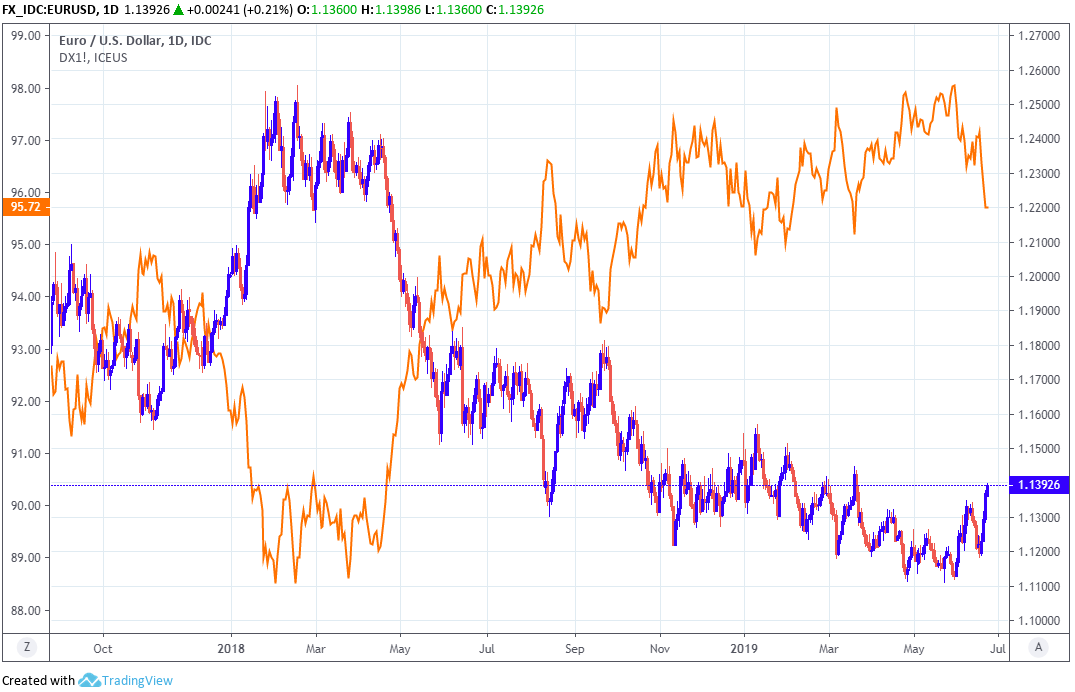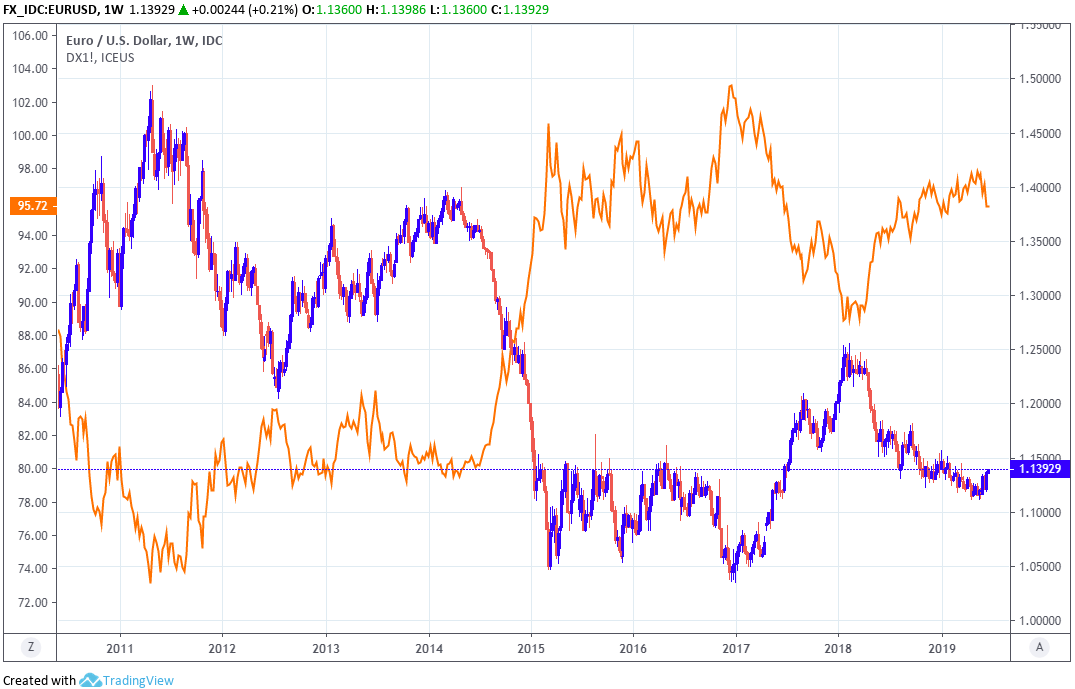Euro-Dollar Rate Going Back Down to 2017 Lows: HSBC
- Written by: James Skinner

Image © Adobe Images
- EURUSD to return to 2017 levels this year, HSBC forecasts.
- Says ECB has run out of bullets so EUR must do heavy lifting.
- Fed won't cut U.S. rates this year, sees USD stronger for longer.
- As line of other analysts forecasting higher EUR grows longer.
The Euro was on its front foot at the start of the new week, aided by a continued weakening of the U.S. Dollar, although the outlook for the single currency continues to divide opinion among analysts with some forecasting it to hit new lows later this year as others look for a steep recovery.
HSBC, one of the world's largest banks and a significant foreign exchange dealer, says that over the coming months Europe's unified unit will fall to levels not seen since the middle of 2017. Meanwhile Canada's TD Securities is the latest to tip the currency for substantial gains over the Dollar.
"The calls are now coming in thick and fast for the Fed to cut rates as US data has rolled over and inflation remains stubbornly sub-target. This has seen a significant re-pricing of Fed rate expectations since late 2018," says Dominic Bunning, a strategist at HSBC. "At the same time, rate hike expectations for the ECB have barely budged by comparison, even though the deterioration of Eurozone data relative to the US has been even more pronounced."
The Euro has risen 1.6% against the Dollar in the last week as investors have dumped the U.S. currency in response to what looks like a landmark shift in Federal Reserve (Fed) interest rate policy. It's now down just 0.6% for 2019.

Above: Euro-to-Dollar rate shown at 4-hour intervals.
The Fed has shifted from projecting one more interest rate hike before the end of 2020 to hinting that two rate cuts could now be on the way, due mainly to fears about the health of the U.S. economy. And with the Euro previously having been squashed by its nine interest rate hikes since the end of 2015, many say the Euro is set to rally.
However, the continental economy is facing problems of its own that the currency may eventually have to pick up the tab for. Growth is slowing in the face of President Donald Trump's trade war with China, not to mention a range of domestic problems, and with inflation still running far below the target of "close to but below 2%" financial markets are now anticipating a European Central Bank (ECB) interest rate cut before year-end too.
"Exactly what has led to this slowdown – trade wars, electronics cycle issues, car emission regulation or a deeper structural decline in manufacturing – is not necessarily that relevant. The fact is that the economic outlook is deteriorating fast and something needs to be done," Bunning writes, in a note to clients. "
Surveys have suggested strongly that Europe's economy turned lower again at the start of the second quarter, after growth picked up from 0.2% to 0.4% in the first three months of the year. Germany's Ifo Institute was the latest to sound the alarm bell on the Eurozone economic outlook Monday.
German companies become even more pessimistic about the six-month outlook for their businesses in June, according to the Ifo survey, which could mean the industrial recession that weighed on domestic and Eurozone activity over the last year or so will continue to hinder growth for a while yet.
This is a problem because the ECB needs faster economic growth in order for inflation to rise back to the target. Without signs of an economic pick-up the bank will be forced to take action and one way or the other.
"Interest rates in Europe are effectively at the zero bound, leaving limited monetary policy flexibility," Bunning says. "We argue any loosening of Eurozone monetary conditions may have to come through the currency channel."

Above: Euro-to-Dollar rate at daily intervals, alongside the Dollar Index (orange line, left axis).
Mario Draghi, head of the European Central Bank, said last week that fresh interest rate cuts and a resumption of the quantitative easing programme that saw the bank buy up a large portion of the European government bond market will soon be implemented if things remain as they are.
However, all of the ECB's different interest rates are at zero or already in negative territory which has led markets to assume they can't go any lower. This is while U.S. rates are at 2.5% and the Fed is expected to begin cutting.
That is a recipe for a higher Euro-to-Dollar rate if there ever was one, because capital flows tend to move in the direction of the most advantageous or improving returns and the gap between Euro area and U.S. interest rates is now set to narrow in favour of the Euro. Bunning has a different outcome in mind.
"While many will no doubt highlight the big swing in yield differentials as being EUR supportive, we believe this represents something of a structural shift, with EUR downside likely to continue regardless," Bunning writes. "We remain USD bulls, a stance we have held since April 2018. We see EUR-USD drifting to 1.10 through the course of this year."
HSBC forecasts the U.S. Federal Reserve will leave its interest rate unchanged this year as well as in the first half of 2020 and that, as a result of this, the U.S. Dollar will remain stronger for longer than many are currently anticipating.
This, combined with the ECB having limited room to loosen its own monetary policy settings further from current levels, is seen weighing on the Euro-to-Dollar rate which is expected to end the year down at 1.10 and to remain there through the early part of 2020. That's the Euro's lowest level since May 2017.
UBS has now downgraded its earlier forecast of 1.20 for year-end 2019 to just 1.09, which puts the Swiss bank in line with HSBC. However, a long line of others are looking for significant gains including Societe Generale, Commerzbank and ING. TD Securities reiterated its bullish forecast Monday.

Above: Euro-to-Dollar rate at weekly intervals, alongside the Dollar Index (orange line, left axis).
"While the ECB already came out sounding dovish at its June meeting, ECB President Draghi doubled down on that message last week at the Sintra conference. As a result, and on the back of our change in Fed call, with 75bps of easing expected both this year and again next, we've had a change in view," says Jacqui Douglas, chief European macro strategist at TD Securities.
TD Securities has slashed its U.S. interest rate forecasts this week and now projects the Federal Reserve will cut America's benchmark borrowing cost from 2.5% this year to just 1% by the end of 2020. Meanwhile, the European Central Bank is forecast to slash its deposit rate by a meagre 0.2% this year before leaving it on hold at -0.60%.
Unlike HSBC, the TD Securities team sees this narrowing of the interest rate differential in favour of the Euro as something that is likely to lift the single currency over the coming months.
They're ultimately looking for it to hit 1.18 against the Dollar before year-end, although they warned Monday that this target is more likely to be reached sooner rather than later. TD is just the latest in a long line of companies projecting an increase in the Euro-to-Dollar rate during the months ahead.
"As a result, we think the low may now be in for EURUSD for the current market cycle. Risks, we think, are increasingly returning to the upside," Douglas writes, in a recent note to clients. "For now, we have grown more confident in our 1.18 target for year-end in EURUSD. We also continue to expect the EUR's uptrend to extend in 2020 to finish next year at 1.23."
Time to move your money? Get 3-5% more currency than your bank would offer by using the services of foreign exchange specialists at RationalFX. A specialist broker can deliver you an exchange rate closer to the real market rate, thereby saving you substantial quantities of currency. Find out more here.
* Advertisement




